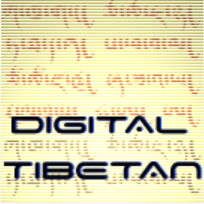Tibetan and mobile devices#
Mobile device |
Displays Tibetan |
Tibetan input method |
Apps |
Support |
Comment |
|---|---|---|---|---|---|
+ + |
+ + |
+ + + |
+ + |
Full Tibetan support since Android 6.0 (2015) |
|
+ + |
+[1] |
+ |
- - |
Full Tibetan support since iOS 4.21 (2010), slowly breaking |
E-Reader |
Displays Tibetan |
Tibetan input method |
Apps |
Support |
Comment |
|---|---|---|---|---|---|
+ |
- - |
- - - |
- |
Recent Amazon Kindle devices, since Firmware 5.16.x, support display of Tibetan. |
|
Boox Leaf 2 |
+ |
++ |
++ |
? |
Requires considerable configuration effort and tech skills |
I want to get a new mobile, what’s best for Tibetan?#
Since both major platforms, Google’s Android and Apple’s iOS fully support Tibetan, it’s mostly a matter of taste which platform is preferred.
Generally Android is more open and easier to customize to more complex applications. If you plan to have maximum possibilities, go with Android. There are significantly more Tibetan apps available for Android than for the other platforms. The language-rendering parts of Android are open-source, and problems are usually fixed efficiently.
Slightly easier to use for some people are Apple iOS devices (iPhone, iPad). This comes at the cost of fewer degrees of freedom: Installing your own content, fonts and cross-application interoperability is considerably hampered when compared to Android. Apple’s support process for low resource languages is simply non-existing: so in case of technical problems, you’re on your own.
For most people, the actual differences between Android and iOS do not matter: just check both app stores for the applications you might want to use. Generally, power-users that want to access all technical possibilities, including extension and development are better off with Android, in terms of ease-of-use iOS has advantages for some.
E-Readers#
Overview ebook readers
Read Tibetan ebook with your: Amazon Kindle ebook reader
Read Tibetan ebook with your: Pocketbook reader
Read Tibetan ebook with your: Onyx Boox reader
How do I work with Tibetan on my mobile device?#
Setup, fonts and Tibetan keyboard:
Apps#
Dictionaries, tools and other apps:
